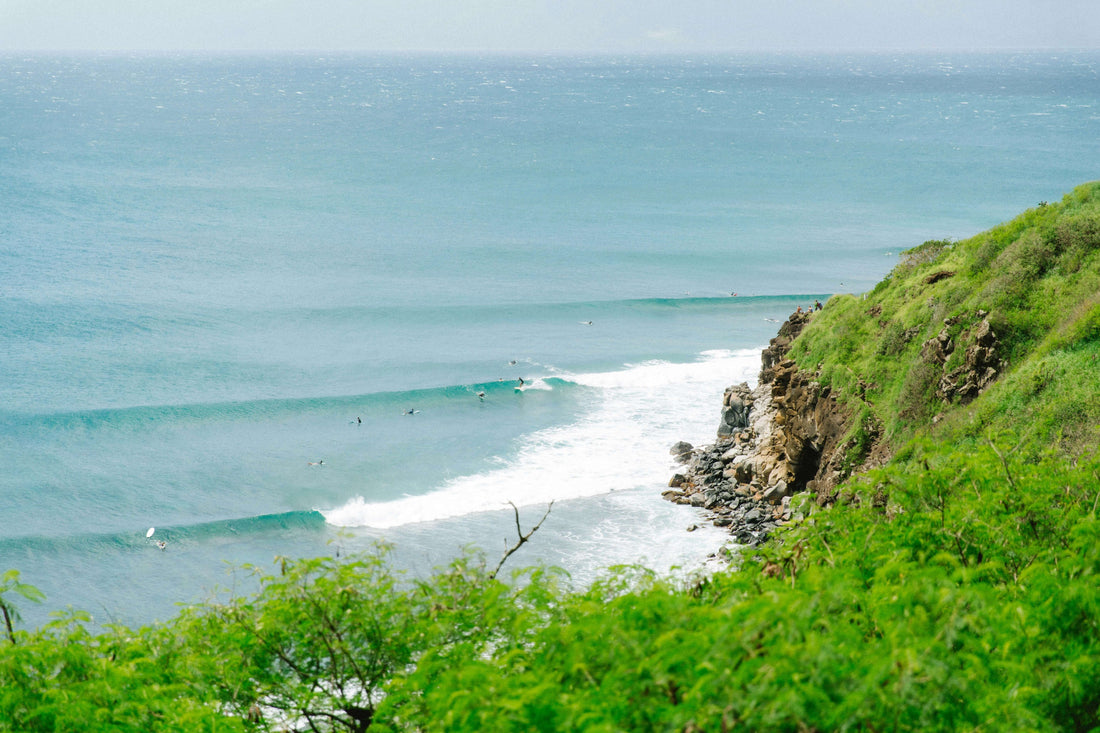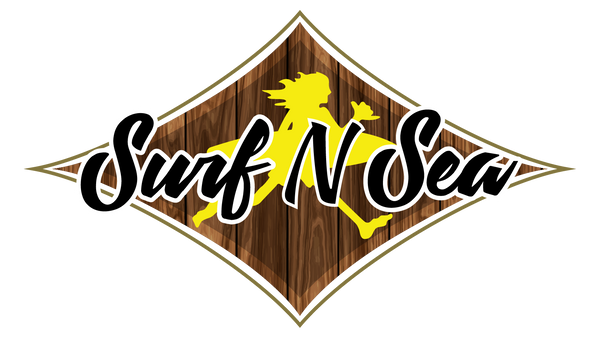
How To Read A Surfing Forecast
Share
Whether you're a seasoned shredder or just learning how to stand up on your first wave, reading a surf forecast is one of the most essential skills for any surfer. It's the difference between scoring epic, clean sets or wasting time paddling through blown-out mush.
At Surf N Sea in Haleiwa, we've been helping surfers of all skill levels find their perfect wave since 1965. In this guide, we'll break down everything you need to know about reading a surf forecast so you can confidently plan your next session.
Why Reading a Surf Forecast Matters
Hawaii's North Shore is home to some of the most powerful waves in the world, and conditions can change quickly. By understanding the basics of a surf forecast, you'll be able to:
-
Maximize your time in the water
-
Avoid unsafe or unrideable conditions
-
Choose the best spots for your skill level
-
Catch more waves and improve faster
There are also comprehensive resources like Surf-Forecast that have forecasts for many locations. Now, let's dive into the main elements of a surf forecast and how to interpret them.
1. Swell Size
What it is: Swell size refers to the height of the waves generated by wind blowing over the ocean, typically measured in feet or meters.
Why it matters: Swell height gives you a general idea of how big the waves will be when they hit the shore.
How to read it:
-
A 1–3 ft swell is ideal for beginners.
-
3–6 ft is perfect for intermediates.
-
6 ft and up is advanced territory, especially on Hawaii's reef breaks.
Pro tip: The reported swell height isn't always the same as the breaking wave height. On Oahu's North Shore, a 6 ft swell might produce 10–12 ft faces depending on the spot and swell direction.
2. Swell Period (Interval)
What it is: The swell period is the time (in seconds) between waves in a set. This tells you how much energy the swell is carrying.
Why it matters: Longer periods = more powerful waves.
How to read it:
-
5–8 seconds = weak, local wind swell.
-
9–12 seconds = moderate, surfable swell.
-
13–20+ seconds = powerful, long-period groundswells (often from storms far out at sea).
Example: A 6 ft swell with 7 seconds might be soft and crumbly, while a 6 ft swell with 16 seconds could be heavy and barreling.
3. Swell Direction
What it is: Swell direction shows where the waves come from, typically listed in degrees (e.g., NW 310°).
Why it matters: Different beaches are angled to catch specific swell directions better than others.
How to read it:
-
North Shore spots like Pipeline or Sunset Beach work best with NW to N swells (300° to 360°).
-
South Shore spots, such as Waikiki or Ala Moana Bowls, are ideal with S to SW swells (180° to 230°).
Pro tip: Use a map or surf app to match swell directions with the orientation of your local breaks.
4. Wind Speed and Direction
What it is: Wind conditions describe the strength and direction of the wind, both offshore and onshore.
Why it matters: Wind can make or break the surf. Clean waves need light or offshore winds.
How to read it:
-
Offshore wind: Blows from land to sea, helping shape hollow, clean waves.
-
Onshore wind: Blows from sea to land, often creating choppy, messy conditions.
-
No wind: Glassy conditions, usually early morning or late evening.
Pro tip: On Oahu's North Shore, light ESE (east-southeast) tradewinds are usually offshore and perfect for morning surf.
5. Tide Information
What it is: Tides are the rise and fall of the sea level, influenced by the moon. Surf forecasts usually include tide charts showing high and low tides throughout the day.
Why it matters: Some breaks work better on certain tides. The tide can affect wave shape, power, and even how dangerous a spot might be.
How to read it:
-
High tide might soften waves or cause backwash.
-
Low tide can make waves faster and more hollow, exposing reefs or rocks.
Pro tip: Know how your favorite spots behave at different tides. Some reefs break fire at mid to low tides, while others need a higher tide cushion.
6. Wave Height vs. Surf Height
You may notice that different websites or apps report surf heights differently.
-
Swell Height refers to the deep-water wave height measured by buoys.
-
Surf Height or face height is the actual height of the breaking wave.
-
Hawaii uses a system called the Hawaiian scale, roughly half the face height.
Example: A 6 ft face would be called "3 ft Hawaiian" by locals.
Pro tip: Always check the forecast's scale—some apps use face height, others use Hawaiian scale. Learn what each one means so you're not surprised when you paddle out.
7. Surf Forecast Tools & Apps
Here are some of our go-to resources for checking surf conditions in Hawaii:
-
Surfline – Reliable surf reports, live cams, and long-range forecasts.
-
Magicseaweed – Easy-to-read graphs and swell details (now part of Surfline).
-
Windy – Great for wind and swell maps.
-
NOAA Buoy Data Center – Raw swell and wind data from ocean buoys.
-
Local Surf Shops (like Surf N Sea!) – Drop in and chat with our crew for firsthand local knowledge.
8. Putting It All Together: A Real-Life Example
Let's say you check the forecast for Haleiwa Beach Park:
-
Swell: NW 5.5 ft @ 14 seconds
-
Direction: 310°
-
Wind: ESE at six mph (offshore)
-
Tide: Low tide at 7:30 AM, rising mid-morning
What does this tell you?
You've got a solid long-period NW swell—perfect direction and energy for North Shore reefs. Offshore tradewinds mean clean conditions. Early morning low tide might expose the reef, so mid-morning could be ideal as the tide comes in. Grab your board and wax up!
Hawaii-Specific Surf Conditions
Hawaii's unique island geography means it receives swell from all directions year-round. The North Shore of Oahu lights up with powerful NW swells in the winter, delivering world-famous waves at spots like Pipeline and Sunset Beach.
In summer, the South Shore comes alive with long-period S and SW swells, offering fun, user-friendly waves perfect for longboarding. Each island and coast has its seasonal sweet spot; knowing when and where to go is key to scoring the best surf in the Aloha State.
Final Tips for Surf Forecast Success
-
Check the cams: Live webcams give you a visual check of the conditions.
-
Know your limits: Big swells may look tempting, but only paddle out if you're confident in your ability.
-
Plan: Long-period swells can last for days—pick the best window for your ability and schedule.
-
Stay safe: Don't surf alone, watch for changing conditions, and know your entry/exit points.
Surf N Sea Is Here to Help
If you're ever unsure about the forecast or where to paddle out during your time in Oahu, the crew at Surf N Sea is always happy to help. Whether you need gear, lessons, rentals, or local knowledge, we've got your back.
Stop by our shop in historic Haleiwa or check out our website to gear up and get in the water.
